Criterion’s 4K UHD “Barry Lyndon” highlights Oscar-winning art direction, costumes, cinematography and music
- Peggy Earle

- Jul 31
- 6 min read
Updated: Jul 31
4K ULTRA HD REVIEW / HDR SCREENSHOTS
During the 1970s, Ryan O’Neal had become one of Hollywood’s biggest stars. He plays a poor Irishman, Redmond Barry, who enlists in the British Army and eventually becomes Barry Lyndon, marrying the wealthy Lady Lyndon (Marisa Berenson). Her eldest son, Lord Bullingdon (Leon Vitali), is at her side.
(Click an image to scroll the larger versions)
“BARRY LYNDON: THE CRITERION COLLECTION”
4K UHD & Blu-ray; 1975; PG for violence and brief nudity
Best extra: Interview with critic Michel Ciment
STANLEY KUBRICK, whose impressive oeuvre contains some of the most memorable, iconic works in the history of cinema, often based his films on a contemporary book.
“Dr. Strangelove” was inspired by Peter George’s 1964 political satire; “Clockwork Orange” by the 1962 dystopian Anthony Burgess novel; “The Shining,” by Stephen King’s 1977 horror classic, etc. For the saga of “Barry Lyndon,” Kubrick went way back to 1844, and a picaresque serial by William Makepeace Thackeray.
It tells of the rise and fall of fortune in the life of an Irish farm boy named Redmond Barry (Ryan O’Neal). When his love for a local, wealthy girl backfires, Barry sets out on a journey that includes being a soldier and a gambler, which eventually introduces him into high society. He meets Lady Lyndon (Marisa Berenson), a beautiful widow with a young son and a great fortune, and proceeds to court and marry her. Thus, he’s transformed into Barry Lyndon, lord of a sprawling grand manor and, soon, the father of an heir. But Barry can’t change his ways, and his penchant for dissipation and irresponsibility eventually lead to tragedy and ruin, both physical and material.
(1) Redmond Barry’s father dies in a duel. (2&3) While watching a group of soldiers going off to war, Barry becomes attracted to his cousin Nora (Gay Hamilton). (4) But she’s engaged to John Quin (Leonard Rossiter), an English army captain. (5) Undaunted, Barry courts Nora. (6) Barry on his farm.
Kubrick’s brilliance takes this cynical look at human nature and makes with it a 3-hour immersion into nothing less than great art; every screen image evokes a gorgeous painting. The style, pacing, and performances all work together seamlessly, with a score that complements the drama to perfection, making “Barry Lyndon” an enduring classic and a masterpiece of cinema.
VIDEO
The original open matte 35mm camera negative was scanned in 16-bit 4K, and then matted to 1.66:1 aspect, as specified by Kubrick to the theater projectionist in 1975. Over the years, the home theater aspect ratio has varied. The first DVD was matted 1.78:1 and the same as its previous Blu-ray 2011. But, with Criterion’s Blu-ray edition (2017), it was matted at 1.66:1 and sourced from its new 4K restoration master.
The 2000 2K master, supervised by Kubrick’s assistant Leon Vitali, served as a color reference for the new HDR10 and Dolby Vision grading. The colors are natural and perfectly saturated with their gorgeous painterly imagery, which won the Academy Award for Best Cinematography for John Alcott (“2001: A Space Odyssey,” “A Clockwork Orange”) for its breakthrough low-light scenes. It was the first film to be captured with only candles; in one scene, only three were burning. The development of ultra-fast lens made it possible. Plus, they photochemically pushed the film stock by one stop to expose more of the captured image. The film grain is more pronounced and defined on the 4K Ultra HD. And it's slightly darker than the previous Criterion Blu-ray, with darker blacks and more detailed highlights.
The majority of the scenes were captured with natural light, and filmed in real stately homes to create that ‘romantic period.’
(1) Cousin Nora must decide between Captain Quin or Barry? (2) A toast to the upcoming marriage between Quin and Nora. (3) Barry’s friend, Grogan (Godfrey Quigley), acts as his second. (4&5) Barry challenges Quin to a duel.
AUDIO
The original Mono track had been previously restored, and the creation of the six-channel DTS-HD soundtrack was derived from the Mono mix in 2000. The Oscar-winning score features works from the grand composers, including Bach, Handel, Mozart, Paisiello, Schubert and the Irish folk band The Chieftains. We know Kubrick preferred Mono, but to our ears, we liked the 5.1 track.
Sir Michael Hordern’s first-rate narration never gets lost in the remastered soundtrack.
EXTRAS
Although there are no new extras included in this Criterion edition, most imported from the 2017 Criterion Blu-ray version, they’re all extremely interesting and worthwhile. There are a variety of interviews with cast, crew and archival audio of Kubrick; historian Christopher Frayling on production designer Ken Adam; actor and Kubrick assistant Leon Vitali on the conversion from Mono to 5.1 Stereo surround soundtrack; Metropolitan Museum curator Adam Eaker on the paintings that inspired the production design; and a booklet containing an essay by critic Geoffrey O’Brien and two articles from the March 1976 issue of American Cinematographer magazine.
It was challenging to pick a “best” one, but Michel Ciment, the author of “Kubrick: The Definitive Edition,” gives an especially informative and satisfying overview of Kubrick’s career and “Barry Lyndon’s” place in it.
(1) Barry is banished, and bids Nora goodbye. (2) He’s held up by highwaymen and loses everything. (3-5) Desperate, he enlists in the British army and reunites with Grogan, who tells him Quin survived the duel, but Nora’s family deceived Barry so he’d leave.
Ciment divides the director’s work into three stages. He refers to the first as Kubrick’s “apprentice” phase, when his films were “not great.” The second stage includes films Ciment calls “very good,” such as “Paths of Glory,” “The Killing,” and “Lolita.” The third and final stage presents what Ciment considers Kubrick’s “total revolution” of filmmaking, each one representing a different cinematic genre: “Dr. Strangelove” (Cold War satire); “2001” (science fiction); “Clockwork Orange” (dystopian satire); “Full Metal Jacket” (war); “The Shining” (horror); “Eyes Wide Shut” (European art); and, of course, “Barry Lyndon,” a period costume drama.
Ciment says Kubrick was “more like a painter,” who “adapted his visual style to the subject matter.” Ciment sees “Barry Lyndon” as a kind of remake, or mirror image, of “Clockwork Orange,” since both deal with the ascent and fall of its hapless antiheroes. Kubrick learned “economy of style” from silent films and commercials, notes Ciment, because for both, an image has to tell the audience something “quickly and forcefully.”
Ciment calls Kubrick a “visionary,” even though his imagination “had to come from something that exists already.” Ciment points out that the 18th century was “very important to Kubrick,” and illustrates the elements of that time period in several of his films. The director was interested in the Age of Enlightenment, Voltaire, and the “conflict between passion and reason.” Kubrick “satirizes and ridicules strong people and sympathizes with victims … he was a Freudian … an anarchist (who was) against power (but also)” wanted stability.” Kubrick shied away from giving interviews, because “he wanted to protect his process and his inspiration.”
When it came to editing, Ciment says, Kubrick was willing to shorten his other films, but refused to cut a minute from the lengthy “Barry Lyndon,” even though it was initially a box office flop. In Ciment’s opinion, the film “is exceptional because it’s the totality of life represented in three hours.”
— Peggy Earle
(1) Barry fights in the Seven Years’ War. (2) He pulls the fatally injured Gorgan from the battlefield. (3) Barry deserts the army and meets and seduces a young German matron (Diana Körner).
(1&2) Later, Barry meets Captain Potzdorf (Hardy Krüger), who impresses Barry into the Prussian army. (3) Barry saves Potzdorf's life in battle, and is awarded a commendation from Frederick the Great. (4) After the war, Barry meets the Chevalier de Baliberi (Patrick Magee), an Irishman disguised as an Austrian, and is hired to be the Chevalier's manservant. (5&6) The two become friends and gambling buddies.
(1&2) Barry marries Lady Lyndon (Marisa Berenson) and they have a baby boy named Bryan. (3&4) The marriage is an unhappy one, due to Barry's unfaithfulness and cruelty. (5&6) Barry's beloved young Bryan is badly injured in a riding accident. (7-9) Lord Bullingdon challenges the dissipated Barry to a duel.

4K Menu screen
SPECS:
100 GB disc
True 4K mastering
4-perf 35mm film stock and matted to 1.66:1 aspect ratio
Video bitrate: 51 Megabits per second, with a running time of 3 hours 5 minutes.
Academy Awards: Seven nominations, including Best Picture, Best Director, Best Writing Adapted from other Material, and won Four Oscars: Best Cinematography, Best Art Direction-Set Decoration, Best Costume Design, and Best Music, Scoring Original Song Score and or Adaptation
Box Office: $20 million domestically, with 9.7 million tickets sold, and finished the year as the No. 19 top box office film. Steven Spielberg’s “Jaws” was No. 1 at the box office with $260 million at the box office and 127 million tickets sold.
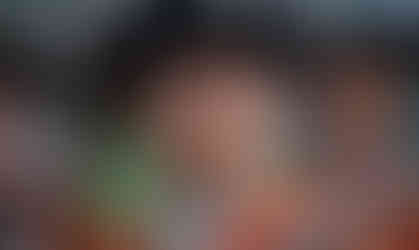





















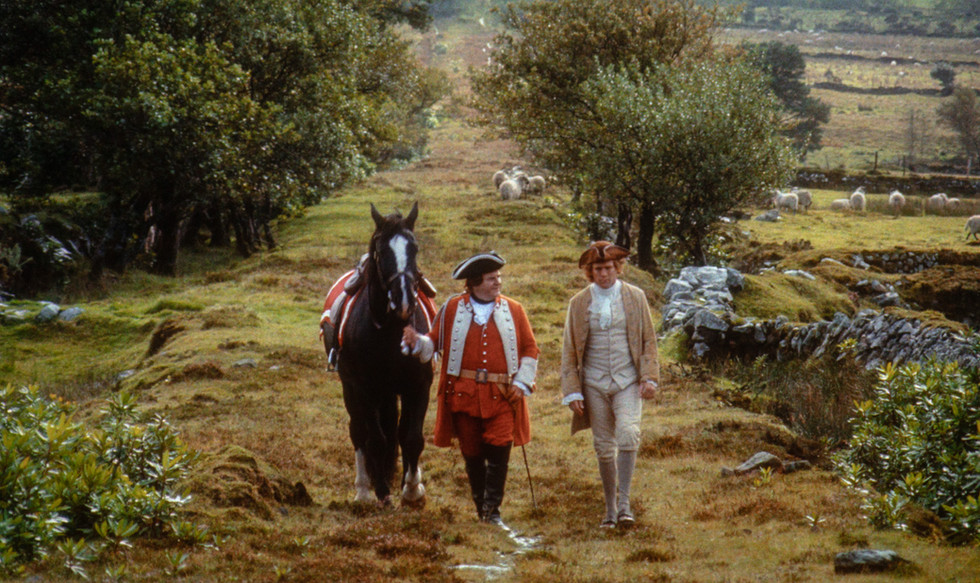









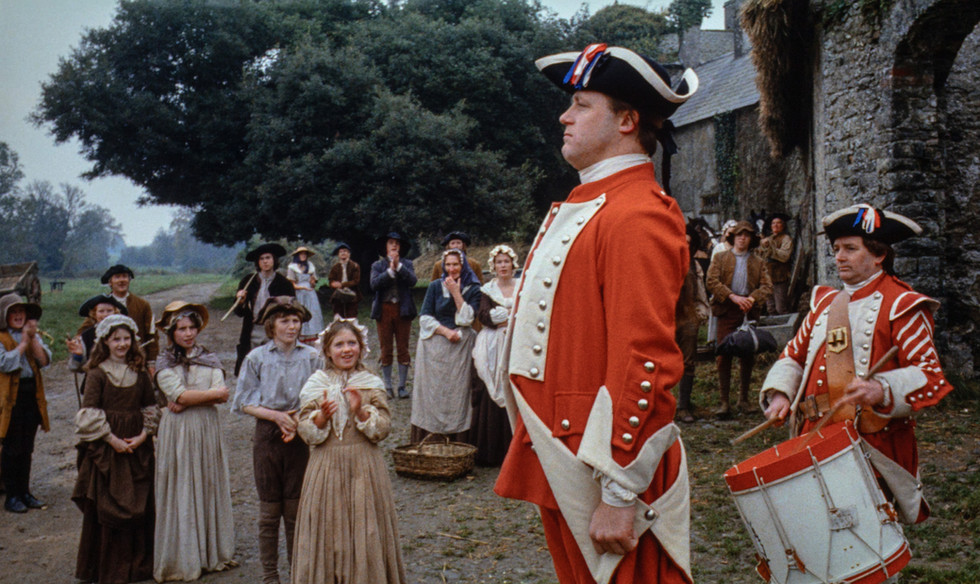

































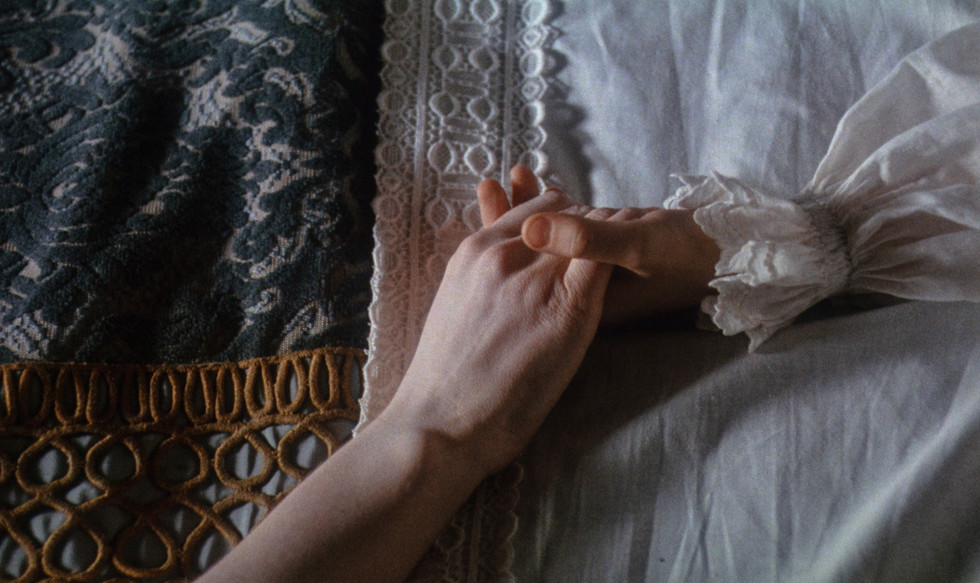






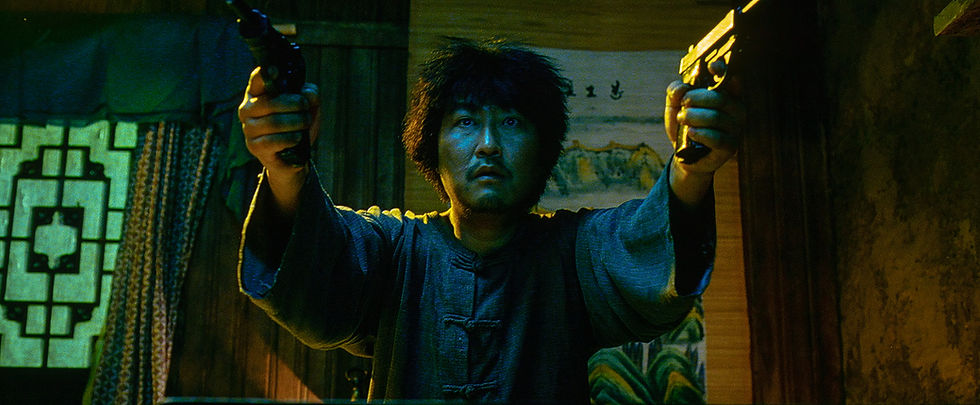


Comments